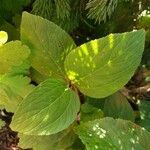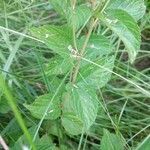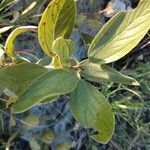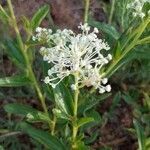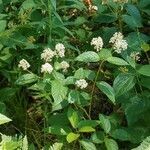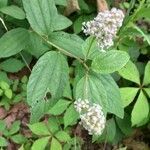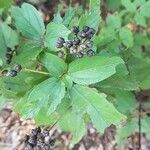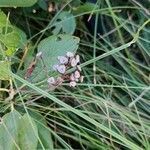Shrubs, deciduous, 0.8–1.5 m. Stems erect to ascending, not rooting at nodes; branchlets usually green, sometimes reddish brown, not thorn-tipped, round or slightly angled in cross section, flexible, puberulent, glabrescent. Leaves: petiole 4–13 mm; blade not aromatic, flat, ovate to ovate-oblong, (20–)30–100 × 15–64 mm, herbaceous, not resinous, base rounded, margins serrate to serrulate, teeth 54–130+, apex usually acuminate to acute, rarely obtuse, abaxial surface pale green, puberulent, especially on veins, adaxial surface dark green, dull, puberulent, especially on major veins; 3-veined from base. Inflorescences terminal or axillary, paniclelike, cylindric to conic, 3–14 cm. Flowers: sepals, petals, and nectary white. Capsules 4–6 mm wide, not lobed; valves ± rugulose, crested. 2n = 24.
A small deciduous shrub. It grows 0.6-1 m high and spreads 45 cm wide. The roots are tough and dark red. The leaves are slender and oval. They are 10 cm long. The flowers are white in dense panicles. The fruit is a triangle shaped seed pod.
